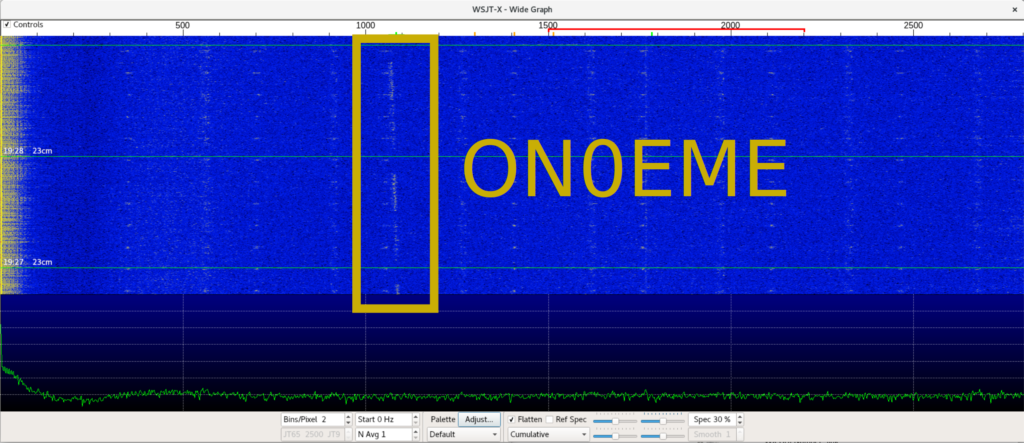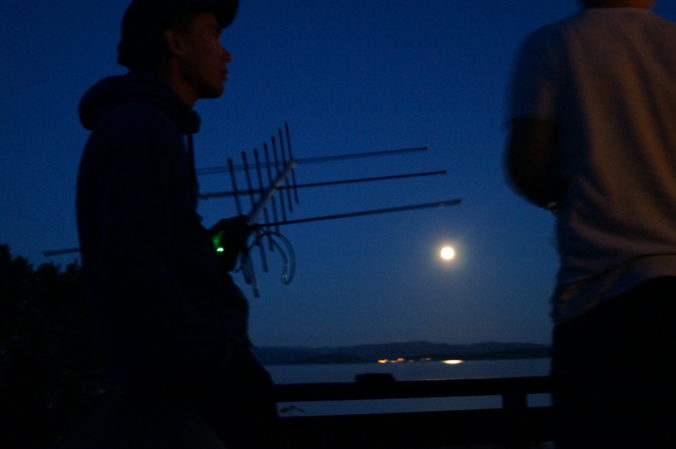Back in April we were wrote two posts (1, 2) on the progress we have had with our 3 m parabolic dish. Since then, other projects such as maintenance and expansion of our beacons have had higher priority, and the parabolic dish project has been stalled for some time. We have been able to finish one major milestone, however: We’ve finally been able to hear the Moon! Specifically, we have heard the ON0EME 23 cm beacon via the Moon for the first time, which acts as a major validation milestone for our reception chain.
When we last wrote about this project, we had resolved an issue with the feed antenna, and fixed a moisture problem inside the LNA box. We did not need to wait long before there was good opportunity to hear ON0EME, as the week after the issues were fixed featured a couple of days where the moon was quite close to the Earth. For the first few days we struggled with low signal to noise ratios, which was due to the moon and sun having coincident orbits. Luckily, this resolved itself after a couple of days – and the signals were loud and clear!

ON0EME as received by our 3 m parabolic dish, 0.5 dB LNA and USRP B210 setup.
Well… loud and clear is a bit of an exaggeration. Apparently it is quite rare to be able to have audible CW signals from the Moon, at least with a setup such as ours (3 m dish + 0.5 dB LNA). The trick is to set up your receiver to dump a waterfall, and then you let that run for a couple of minutes. What you are looking for is a signal that has drift in frequency that matches the expected doppler shift for the signal you want to hear. We made a recording on ON0EME, and plotted it versus time, to illustrate the point. It is much easier to see the signal, than it is to listen for it.

Reception of ON0EME on 17:22 UTC 20.04.18. The skips along the FFT bin axis are caused by the operator tuning the frequency.
In addition to reception of ON0EME, LB6RH spent some time looking operators on the 23 cm band. He found two strong signals trying to work other stations using the JT65C mode.

EA8DBM and HF7VBA attempting to contact GW3XYW and VV3EZD, respectively, as received by our parabolic antenna.
These receptions indicate that we are likely to achieve some EME QSOs, once we have our 100 W amplifier up and running. Now we need to organize our stuff, and make a push to be TX-ready on 23 cm.


Congratulation. Well done…Please contact me for a sked when ready to tx…
73’s de LA3EQ Jan